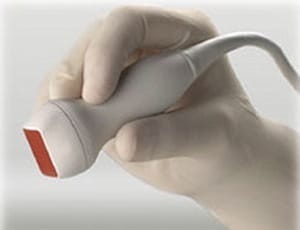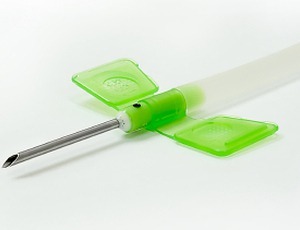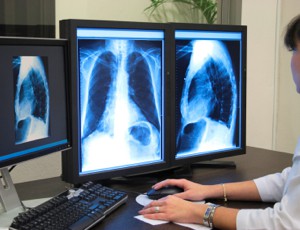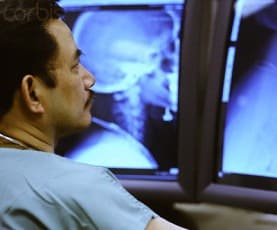Cost-effectiveness analysis of two antiseptic solutions in CLABSI prevention

To perform a cost-effectiveness analysis of skin antiseptic solutions (chlorhexidine-alcohol (CHG) versus povidone iodine-alcohol solution (PVI)) for the prevention of intravascular-catheter-related bloodstream infections (CRBSI) in intensive care unit (ICU) in France based on an open-label, multicentre, randomised, controlled trial (CLEAN)” Maunoury et al (2018). Abstract: OBJECTIVE: To perform a cost-effectiveness analysis of skin antiseptic solutions […]
Extended dwell peripheral IV catheter for neonatal vascular access

Extended dwell peripheral intravenous catheter is a feasible option for neonatal vascular access” Chenoweth et al (2018). Abstract: BACKGROUND: Establishing vascular access is a common neonatal intensive care unit procedure. The extended dwell peripheral intravenous (EPIV) catheter is a 6-cm and 8-cm silicone catheter for peripheral vein insertion, which is a newer vascular access device […]
Does contrast use to visualise PICC in preterm babies cause hypothyroidism?

To compare thyroid function tests in preterm neonates (<30 weeks and >48 hour old) exposed to iodine-based contrast with controls and ascertain the certainty of peripherally inserted central catheter (PICC) tip position” Rath et al (2018). Abstract: AIM: To compare thyroid function tests in preterm neonates (<30 weeks and >48 hour old) exposed to iodine-based contrast with […]
Vascular access and diagnosis of upper extremity venous thrombosis
This paper discusses the importance of the functional assessment of vascular access, as well as the examination method and points for diagnosis of venous thrombosis” Ogata and Nishigami (2017). Abstract: Ultrasonography is useful not only for screening, but also for evaluating pathological conditions and followup because it can be performed repeatedly and noninvasively at bedside. […]
Survey of fluid bolus therapy in critically ill children

Fluid bolus therapy (FBT) is a widely used intervention in paediatric critical illness. The aim of this study was to describe the attitudes and practices towards FBT of paediatric intensive care doctors in Australia and New Zealand” Gelbart et al (2018). Abstract: OBJECTIVE: Fluid bolus therapy (FBT) is a widely used intervention in paediatric critical […]
Safety of anticoagulation for CVC associated upper extremity DVT prevention

To evaluate the efficacy and safety of anticoagulation for thromboprophylaxis in people with cancer with a CVC” Kahale et al (2018). Abstract: BACKGROUND: Central venous catheter (CVC) placement increases the risk of thrombosis in people with cancer. Thrombosis often necessitates the removal of the CVC, resulting in treatment delays and thrombosis-related morbidity and mortality. This […]
Delayed migration of PICC and perforation of the jugular vein
We report a case of peripherally inserted central catheter (PICC) migration and perforation of the left internal jugular vein in a home health setting in an 80-year-old female” Oliver et al (2017). Abstract: We report a case of peripherally inserted central catheter (PICC) migration and perforation of the left internal jugular vein in a home […]
Delaying parenteral nutrition may reduced the number of ICU-acquired infections

In the EPaNIC RCT (N=4,640), postponing the administration of parenteral nutrition (PN) to beyond one week in the intensive care unit (ICU) (late-PN) reduced the number of ICU-acquired infections and the costs for antimicrobial drugs as compared with initiation of PN within 24–48h of admission (early-PN)” De Vlieger et al (2018). Abstract: Objective: In the […]
Development of an evidence-based outpatient ketamine infusion policy

This project’s objective was to formulate an outpatient ketamine infusion policy that promotes consistent and evidence-based care within a specified hospital system” Allen et al (2018). Abstract: Current literature supports using ketamine for both acute and chronic pain management. It is imperative that the development of evidence-based protocols and policies keep pace with health care […]
Infection prevention practice associated with ultrasound probe use

Improper infection prevention practice associated with ultrasound probe use has been linked to increased infection risk, outbreaks, and death. Although guidelines for reprocessing and use of probes exist, it is unclear how extensively these have been adopted in practice” Carrico et al (2018). Abstract: Background: Improper infection prevention practice associated with ultrasound probe use has […]
CHG IV dressings reduced CRBSI caused by Gram-positive microorganisms

We compared the protective effects of secure Chlorhexidine Gluconate (CHG)-containing dressings with those of non-antimicrobial transparent dressings” Ergul et al (2018). Abstract: OBJECTIVE: We compared the protective effects of secure Chlorhexidine Gluconate (CHG)-containing dressings with those of non-antimicrobial transparent dressings. METHODS: This prospective, comparative, single-center clinical study was conducted in a tertiary pediatric intensive care […]
Barriers to ultrasound CVC insertion in a resource-constrained environment

We sought to identify perceived barriers to the use of US to guide CVC insertion in a resource-constrained environment” Zaver et al (2018). Abstract: BACKGROUND: While ultrasound (US) use for internal jugular central venous catheter (CVC) placement is standard of care in North America, most developing countries have not adopted this practice. Previous surveys of […]
Demographic and patient outcomes related to home parenteral nutrition

We conducted a retrospective analysis of outcome data of children on home Parenteral Nutrition (HPN), over a 15 year period” brown et al (2018). Abstract: AIM: We performed this study to examine and understand the evolving demographics and changing outcomes of intestinal failure, and its implications for healthcare delivery. METHOD: We conducted a retrospective analysis […]
Implementation of evidence-based practice in CLABSI prevention

To describe knowledge, values, and implementation of evidence-based practice (EBP) and use of two National Patient Safety Goals-Central Line Associated Blood Stream Infections (CLABSI) and Surgical Site Infections (SSI)-between nurses working in Magnet® versus non-Magnet® designated hospitals” Connor (2018). Abstract: PURPOSE: To describe knowledge, values, and implementation of evidence-based practice (EBP) and use of two […]
Device-associated nosocomial infection in the Kingdom of Saudi Arabia

This study aims to identify DA-HAI rates among a group of selected hospitals in the Kingdom of Saudi Arabia (KSA), 2013-2016″ Said metal (2017). Abstract: Healthcare-associated infections (HAIs) including device-associated HAI (DA-HAI) are a serious patient safety issue in hospitals worldwide, affecting 5-10% of hospitalized patients and deadly for patients in intensive care units (ICUs). […]
Novel needleless connector results in dramatic decrease in CLABSI

We wanted to determine if the use of a novel needleless connector, impregnated with chlorhexidine and silver ions, paired with nursing education to consistently apply best practices would reduce CLABSI rates in a high-risk population” McCombs and Cisar (2018). Background: Central lines are a common device in Intensive Care Unit (ICU) and oncology patients, however, […]
Femoral placed totally implantable central venous access port
We present a case of a 70-year-old colorectal adenocarcinoma patient diagnosed with subclavian vein hypoplasia. Her care team decided intraoperatively to implant a port system by the right femoral access” Cherkashin et al (2018). Abstract: Totally implanted venous access port (TIVAP) systems provide adequate quality of care and life, especially for oncology patients. Long-term vascular […]
How often do we perform painful procedures in the paediatric intensive care unit?

The primary objective was to determine the number of painful and stressful procedures per patient per day in our PICU patients, including the numbers of attempts” Baarslag et al (2018). Abstract: BACKGROUND: Adequate analgesia and sedation is crucial in critical care. There is little knowledge on the extent of painful and stressful procedures on children […]
Vascular access selection in elderly patients starting hemodialysis
In elderly hemodialysis patients initiating hemodialysis therapy with a catheter, the optimal vascular access selection depends on tradeoffs between shorter catheter dependence and less frequent interventions to make the vascular access (AVG) functional versus longer access patency and fewer interventions after successful use of the vascular access (AVF)” Lee et al (2018). Abstract: RATIONALE & […]
Inadvertent right vertebral artery rupture during dialysis catheter insertion
We report the case of a 79-year-old female dialysis patient who suffered a vertebral artery (VA) injury complicated by a herald bleeding on the 3rd post-intervention day after an internal jugular vein dialysis catheter replacement” Tasopoulou et al (2018). Abstract: Central venous (CV) catheterization is not only an invaluable diagnostic modality but also an essential […]
Incidence of midline catheter-associated bloodstream infections

Unlike CLABSI, reporting of BSIs associated with MCs is not mandatory and the incidence of MC-associated BSIs (MLABSIs) has not been extensively studied. The objective of this study was to determine MLABSI incidence” Hogle et al (2018). Background: A midline catheter (MC) is a non-central venous catheter that may remain in place for up to […]
Hub disinfection technique to prevent central line-associated blood stream infections

Increasing evidence shows using Chlorhexidine Gluconate (CHG) may help prevent certain health care associated infections, and may also prove beneficial for the prevention of CLABSI” Cooney et al (2018). Background: Central line-associated blood stream infection (CLABSI) events lead to increased complications, costs, morbidity and mortality. A review of CLABSI events was conducted at a large […]
Focus on central line dressings and infusion tubing care as a CLABSI prevention methodology

The most common causes of CLABSIs are related to imperfect maintenance of the line and associated tubing” Parada et al (2018). Background: Central line associated blood stream infections (CLABSI) endanger patient safety and increase morbidity, mortality, length of stay and the cost of medical care. The most common causes of CLABSIs are related to imperfect […]
Expert-based recommendations for OPAT services in Spain

The objective of this clinical guideline is therefore to provide evidence- and expert-based recommendations with a view to standardizing clinical practice in this care modality and contribute to a progressive increase in the number of patients who can be cared for and receive intravenous therapy in their own homes” López Cortés et al (2018). Abstract: […]
The challenge of learning to self-cannulate arteriovenous access

Patients with end-stage kidney disease who are considering home hemodialysis (HHD) face the challenge of learning to self-cannulate their arteriovenous access” Ward et al (2018). Abstract: Patients with end-stage kidney disease who are considering home hemodialysis (HHD) face the challenge of learning to self-cannulate their arteriovenous access. Current practice discourages the use of tunneled central […]
Augmented reality glasses in central line insertion simulation

The aim of this study was to investigate the feasibility of using augmented reality (AR) glasses in central line simulation by novice operators and compare its efficacy to standard central line simulation/teaching” Huang et al (2018). Abstract: OBJECTIVE: The aim of this study was to investigate the feasibility of using augmented reality (AR) glasses in […]
Intraperitoneally located tip of femoral central venous catheter

It was concluded that in any case of acute abdominal issues, following insertion of femoral venous catheter, evaluation of catheter misplacement by the means of contrast injection through it can be helpful for better diagnosis, and may help avoid unnecessary surgical interventions” Shafiee et al (2018). Abstract: Central venous catheterization is a common procedure in […]
Epidemiology of catheter-related bloodstream infections in cancer patients

We compared the etiologic organisms of bloodstream infections (BSIs) in cancer patients with central venous catheters (CVCs) between 2 cohorts separated by more than a decade” Chaftari et al (2018). Abstract: We compared the etiologic organisms of bloodstream infections (BSIs) in cancer patients with central venous catheters (CVCs) between 2 cohorts separated by more than […]
Malposition of central venous catheter due to radiation-induced venous stenosis

CXR was done postinsertion to confirm the position of CVC, which revealed that the tip of the catheter was in the right internal jugular vein (IJV)” Extract: “The day before surgery, using the standard Seldinger technique with portable ultrasound (ACUSON, Siemens) guidance, the right subclavian vein (SV) was cannulated with 7 Fr triple-lumen central venous […]
The subclavian vein approach for central venous catheter insertion

In this report, we describe a patient with a chemotherapy port placed in the subclavian vein that underwent spontaneous fracture” Sun and Soares (2018). Introduction: Central venous catheters (CVCs) are commonly used and have a range of outpatient and inpatient indications. A subclavian vein approach has traditionally been used for placement of these catheters; however, […]

